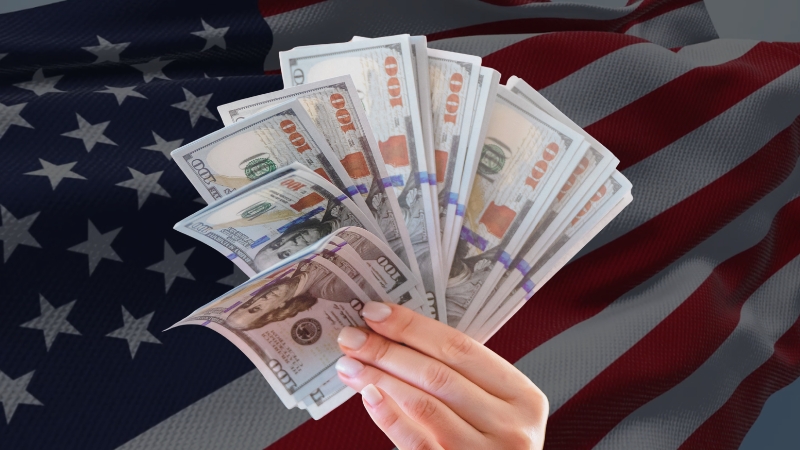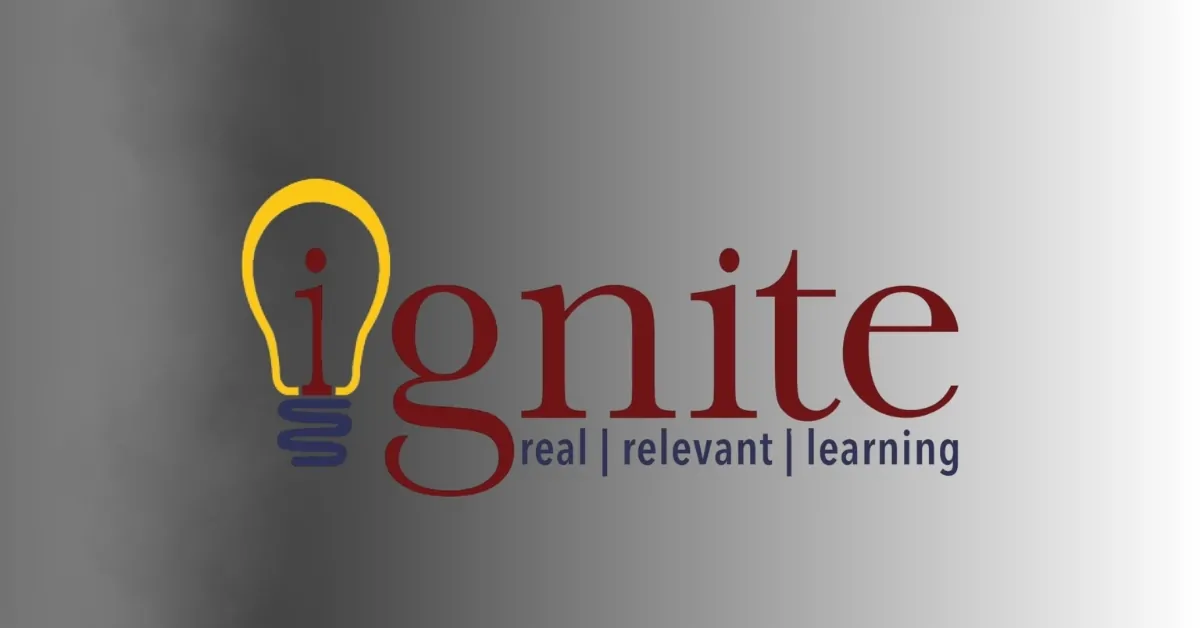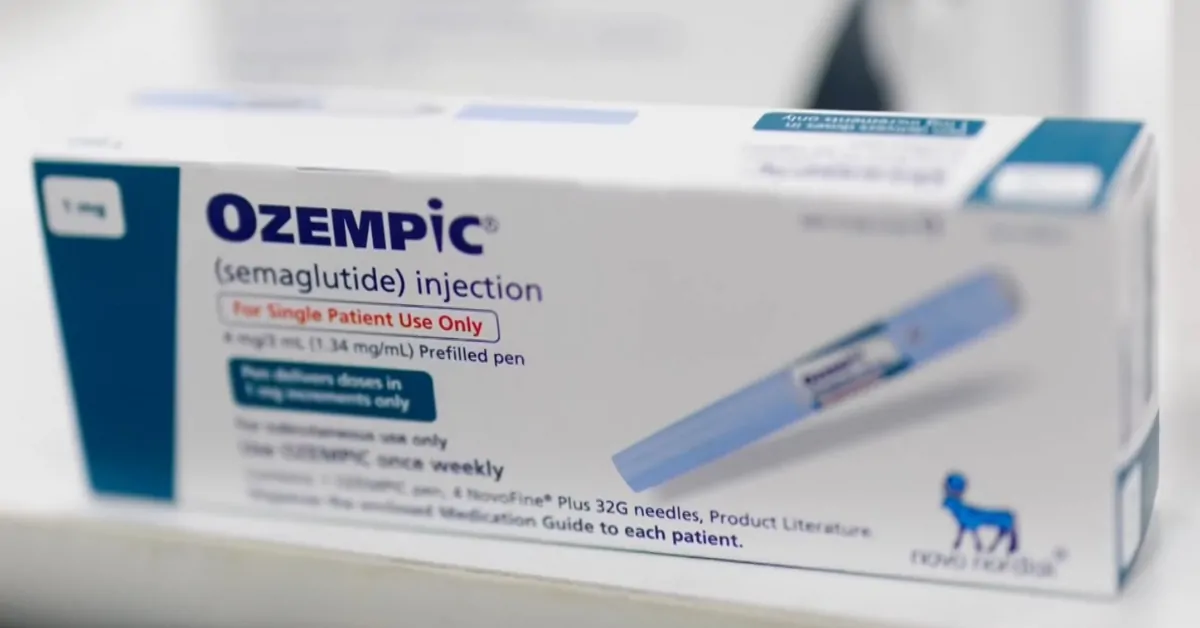In 2023, the U.S. federal government collected $4.67 trillion in taxes and redistributed $4.56 trillion back to states through programs such as Social Security, Medicaid, and education grants.
However, not every state gives and receives equally. Nineteen states contributed more to Washington than they got back, while thirty-one states and D.C. received more than they paid.
The largest donor was New York, paying $89 billion more than it received. The biggest recipient was Virginia, gaining $79 billion more than it contributed.
These differences come from variations in income levels, business activity, population size, and the presence of federal facilities such as military bases or research centers.
Top Contributing States (Paid More Than They Received)
| Rank | State | Balance (Billions, 2023) | Per-Person Balance | Main Drivers |
| 1 | New York | −$89 B | −$5,000 | High personal income and corporate tax base |
| 2 | California | −$78 B | −$2,000 | Strong tech and entertainment industry revenue |
| 3 | New Jersey | −$70 B | −$7,456 | High household income, dense corporate base |
| 4 | Texas | −$67 B | −$2,000 | High payroll taxes are offset by a large population |
| 5 | Washington | −$55 B | −$7,000 | Large private sector, limited federal presence |
| 6 | Massachusetts | −$46 B | −$7,000 | High wages and education-driven income taxes |
| 7 | Minnesota | −$44 B | −$8,000 | High per-capita income and corporate tax payments |
| 8 | Ohio | −$37 B | −$3,000 | Industrial output and payroll contributions |
| 9 | Illinois | −$28 B | −$2,000 | Major corporate and individual tax base |
| 10 | Missouri | −$22 B | −$4,000 | Moderate income levels, low federal spending |
| 11 | Florida | −$17 B | −$750 | Large population, modest per-person return |
| 12 | Georgia | −$14 B | −$1,000 | Growing economy, low federal contract activity |
| 13 | Colorado | −$14 B | −$2,000 | High-income residents, low redistribution |
| 14 | Delaware | −$11 B | −$11,000 | High business incorporations, low return flow |
| 15 | Nebraska | −$8 B | −$4,000 | Agricultural revenue exceeds returned subsidies |
| 16 | Utah | −$7 B | −$2,000 | Young workforce, limited federal disbursements |
| 17 | Connecticut | −$5 B | −$1,000 | Wealthy residents, low federal dependency |
| 18 | Tennessee | −$4 B | −$582 | Moderate industrial base, limited federal programs |
| 19 | Rhode Island | −$3 B | −$3,000 | Small population, strong income base |
In total, 19 states contributed more than they received in 2023. These are primarily located in the Northeast, West Coast, and parts of the Midwest, areas with strong economies and a high cost of living.
New York stands out as the nation’s biggest net donor, paying $89 billion more than it received. That translates to about $5,000 per resident.
New York’s massive income tax base, large corporate sector, and high wages ensure the state sends an outsized share of federal taxes to Washington. Yet federal spending there, while still large, can’t keep up.
California followed closely with a $78 billion deficit. The state’s tech industry and large workforce generate tremendous tax revenue, but California’s size and economic output dwarf the per-capita return of federal spending.
New Jersey, with $70 billion more paid than received, ranked third, largely because of its high-income residents and dense corporate presence near New York City.
States like Massachusetts, Washington, and Minnesota also paid far more than they received, largely due to their strong wage levels, advanced industries, and limited reliance on federal transfer programs.
Even Texas, despite being a net contributor at −$67 billion, remains in this group because of its large workforce and major corporate tax contributions.
Per capita, Delaware is the most extreme example, each resident effectively sent about $11,000 more to the federal government than they received back. That’s because Delaware’s lenient corporate laws have turned it into the legal home of hundreds of thousands of companies.
These entities file corporate taxes there, dramatically raising the per-person figure even though the state’s population is small.
Top Recipient States (Received More Than They Paid)
| Rank | State | Balance (Billions, 2023) | Per-Person Balance | Main Drivers |
| 1 | Virginia | +$79 B | +$9,000 | Defense contracts, federal workforce concentration |
| 2 | Alabama | +$41 B | +$8,000 | Heavy defense and manufacturing federal outlays |
| 3 | Arizona | +$40 B | +$5,000 | Veterans’ benefits and retirees’ programs |
| 4 | South Carolina | +$37 B | +$7,000 | Military bases and low tax receipts |
| 5 | Maryland | +$35 B | +$6,000 | Federal employment, research funding |
| 6 | Mississippi | +$30 B | +$10,000 | High Medicaid and SNAP dependency |
| 7 | New Mexico | +$29 B | +$14,000 | Los Alamos labs, defense contracts, Native programs |
| 8 | Louisiana | +$26 B | +$6,000 | Disaster relief and energy subsidies |
| 9 | Kentucky | +$23 B | +$5,000 | Medicaid and transfer payments |
| 10 | Michigan | +$21 B | +$2,000 | Auto industry grants, health-related spending |
| 11 | West Virginia | +$20 B | +$11,000 | Low income, large welfare transfers |
| 12 | Oregon | +$18 B | +$4,000 | Federal land management and benefits |
| 13 | Oklahoma | +$18 B | +$4,000 | Military bases and energy support |
| 14 | D.C. | +$14 B | +$19,748 | Federal operations and contracts |
| 15 | Maine | +$12 B | +$9,000 | Aging population, Medicare, and Medicaid |
| 16 | Alaska | +$11 B | +$15,000 | Tribal health, infrastructure, and defense presence |
| 17 | Hawaii | +$11 B | +$7,000 | Military installations, geographic isolation |
| 18 | North Carolina | +$10 B | +$925 | Federal agencies and contractors |
| 19 | Montana | +$6 B | +$5,000 | Land and agricultural subsidies |
| 20 | Iowa | +$6 B | +$2,000 | Farm subsidies and Medicare payments |
| 21 | Idaho | +$6 B | +$3,000 | Agricultural programs and a low tax base |
| 22 | Indiana | +$4 B | +$645 | Industrial assistance and healthcare transfers |
| 23 | Vermont | +$4 B | +$6,000 | Small population, high per-person transfers |
| 24 | Wisconsin | +$3 B | +$567 | Moderate balance of income and aid |
| 25 | Nevada | +$3 B | +$782 | Tourism-driven fluctuations, small federal footprint |
| 26 | Kansas | +$2 B | +$757 | Agricultural programs and a low tax base |
| 27 | Arkansas | +$1 B | +$478 | Medicaid and educational aid |
| 28 | South Dakota | +$1 B | +$1,000 | Rural aid and low taxes |
| 29 | Pennsylvania | +$965 M | +$74 | Near-neutral federal balance |
| 30 | New Hampshire | +$794 M | +$566 | Small variation, moderate income |
| 31 | North Dakota | +$741 M | +$939 | Energy subsidies and a small population |
| 32 | Wyoming | +$339 M | +$580 | Federal land management and mineral royalties |
On the opposite end, 31 states and Washington, D.C., received more than they paid. The reasons vary: some rely heavily on social programs, others host large numbers of federal employees, and some serve as hubs for military spending or research funding.
Virginia leads the pack by a wide margin, receiving $79 billion more from Washington than it paid. The state’s economy is deeply tied to the federal government, with a huge number of defense contractors, military bases, and civil service jobs concentrated in the Washington, D.C, metro area.
On a per-person basis, that’s about $9,000 more per resident flowing into Virginia.
Alabama and Arizona follow with $41 billion and $40 billion, respectively. Alabama’s advantage comes from heavy defense spending and a high share of federal aid programs. Arizona benefits from retirees, veterans’ programs, and a growing federal presence tied to border security and healthcare.
Mississippi and New Mexico are also among the top recipients. Their relatively low incomes and high dependency on Medicaid, food stamps, and other federal programs mean far more money comes in than goes out.
In per-capita terms, Alaska, New Mexico, and West Virginia lead all states in net inflows, each resident effectively receiving between $11,000 and $15,000 more than they contributed.
Per-Capita Extremes
| Category | State | Amount per Person | Explanation |
| Most paid per person | Delaware | $24,575 | Corporate registrations drive massive federal income tax |
| The least paid per person | West Virginia | $4,867 | Low wages, limited business tax base |
| Most received per person | Alaska | $24,141 | High tribal and infrastructure allocations |
| Least received per person | Utah | $8,612 | Young, working population with lower benefits usage |
What Drives These Differences
- Income and population: High-income, densely populated states (CA, NY, NJ, MA) generate most of the nation’s federal revenue.
- Federal spending patterns: States hosting military bases, federal offices, or with higher poverty rates get more money back.
- Corporate presence: Delaware’s outsized role comes from its incorporation laws; millions of firms pay corporate taxes there.
- Program dependence: Southern and Appalachian states rely more on Medicaid, SNAP, and defense-related outlays.
Overall Picture
| Category | Total States | Net Flow |
| States Paying More Than They Receive | 19 | −$583 B combined |
| States Receiving More Than They Pay | 31 + DC | +$583 B combined |
| National Differential | , | +$105 B in favor of the federal government (≈ $314 per person) |
Why the Gap Exists

The gap between donor and recipient states reflects structural economic and political realities. The U.S. tax system is progressive; wealthier individuals and corporations pay higher rates, which means revenue is concentrated in high-income regions.
But spending is often needs-based or federally mandated, targeting defense, healthcare, infrastructure, and social assistance where it’s needed most.
Defense spending explains much of the imbalance. For instance, Virginia, Maryland, Hawaii, and South Carolina receive billions in Pentagon contracts. The presence of military bases like Norfolk Naval Station or Fort Jackson draws federal payrolls and investments.
In contrast, high-income states like Massachusetts and New York rely more on private-sector activity, which does not generate direct federal outlays.
Federal aid programs are another factor. Medicaid, SNAP, and housing assistance funnel money to low-income states. In 2023, Medicaid alone accounted for $607 billion in transfers to states. Education and transportation added another $135 billion combined.
Meanwhile, federal social insurance programs like Social Security and Medicare directed another $1.6 trillion directly to individuals, often in older or rural states.
Broader Economic Implications
Treasury analysis shows drop in government spending https://t.co/ALUedUbh1S
— Axios (@axios) October 22, 2025
The donor-recipient balance raises important questions about fairness and sustainability. Economically advanced states argue that they shoulder a disproportionate share of the national burden, effectively subsidizing federal benefits in poorer or smaller states.
Critics, however, note that this redistribution is essential for national stability, as it ensures consistent healthcare, defense, and infrastructure across all regions.
Over time, the divide between donor and recipient states has deepened as population shifts and federal priorities change. States with fast-growing populations but low tax bases, like Arizona, Alabama, and Kentucky, are becoming increasingly reliant on federal money.
Conversely, high-cost states like California and New York face ongoing fiscal pressure as they fund national programs while grappling with their own state-level spending needs.
The Complete State-by-State Balance (FY 2023)
| State | Balance (Billions) | Per Capita ($) | Direction |
| Virginia | +79 | +9,000 | Received more |
| Alabama | +41 | +8,000 | Received more |
| Arizona | +40 | +5,000 | Received more |
| South Carolina | +37 | +7,000 | Received more |
| Maryland | +35 | +6,000 | Received more |
| Mississippi | +30 | +10,000 | Received more |
| New Mexico | +29 | +14,000 | Received more |
| Louisiana | +26 | +6,000 | Received more |
| Kentucky | +23 | +5,000 | Received more |
| Michigan | +21 | +2,000 | Received more |
| West Virginia | +20 | +11,000 | Received more |
| Oregon | +18 | +4,000 | Received more |
| Oklahoma | +18 | +4,000 | Received more |
| District of Columbia | +14 | +19,748 | Received more |
| Maine | +12 | +9,000 | Received more |
| Alaska | +11 | +15,000 | Received more |
| Hawaii | +11 | +7,000 | Received more |
| North Carolina | +10 | +925 | Received more |
| Montana | +6 | +5,000 | Received more |
| Iowa | +6 | +2,000 | Received more |
| Idaho | +6 | +3,000 | Received more |
| Indiana | +4 | +645 | Received more |
| Vermont | +4 | +6,000 | Received more |
| Wisconsin | +3 | +567 | Received more |
| Nevada | +3 | +782 | Received more |
| Kansas | +2 | +757 | Received more |
| Arkansas | +1 | +478 | Received more |
| South Dakota | +1 | +1,000 | Received more |
| Pennsylvania | +1 | +74 | Near neutral |
| New Hampshire | +0.8 | +566 | Near neutral |
| North Dakota | +0.7 | +939 | Near neutral |
| Wyoming | +0.3 | +580 | Near neutral |
| Rhode Island | −3 | −3,000 | Paid more |
| Tennessee | −4 | −582 | Paid more |
| Connecticut | −5 | −1,000 | Paid more |
| Utah | −7 | −2,000 | Paid more |
| Nebraska | −8 | −4,000 | Paid more |
| Delaware | −11 | −11,000 | Paid more |
| Colorado | −14 | −2,000 | Paid more |
| Georgia | −14 | −1,000 | Paid more |
| Florida | −17 | −750 | Paid more |
| Missouri | −22 | −4,000 | Paid more |
| Illinois | −28 | −2,000 | Paid more |
| Ohio | −37 | −3,000 | Paid more |
| Minnesota | −44 | −8,000 | Paid more |
| Massachusetts | −46 | −7,000 | Paid more |
| Washington | −55 | −7,000 | Paid more |
| Texas | −67 | −2,000 | Paid more |
| New Jersey | −70 | −7,456 | Paid more |
| California | −78 | −2,000 | Paid more |
| New York | −89 | −5,000 | Paid more |
Conclusion

Federal fiscal balance in 2023 showed a stark divide between wealth-producing and federally supported states.
New York, California, and New Jersey remain net donors, underwriting much of the federal budget.
Meanwhile, Virginia, Alabama, and New Mexico benefit most from federal contracts and programs.
The system highlights how the national economy depends on a redistribution network where tax-heavy states fuel national operations, and federal-spending states sustain the broader social and defense infrastructure that binds the U.S. together.
Related Posts:
- States That Spend the Most (and Least) Per Resident…
- Federal Guidelines for Both Aerobic and…
- Number of Federal Employees of US in 2025 - How Many…
- Which U.S. States Have the Most People Aged 85 and Older?
- Why Detroit's Population Growth in 2023 is a Big Deal
- Which Countries Hold the Most US Debt? Obligation…








